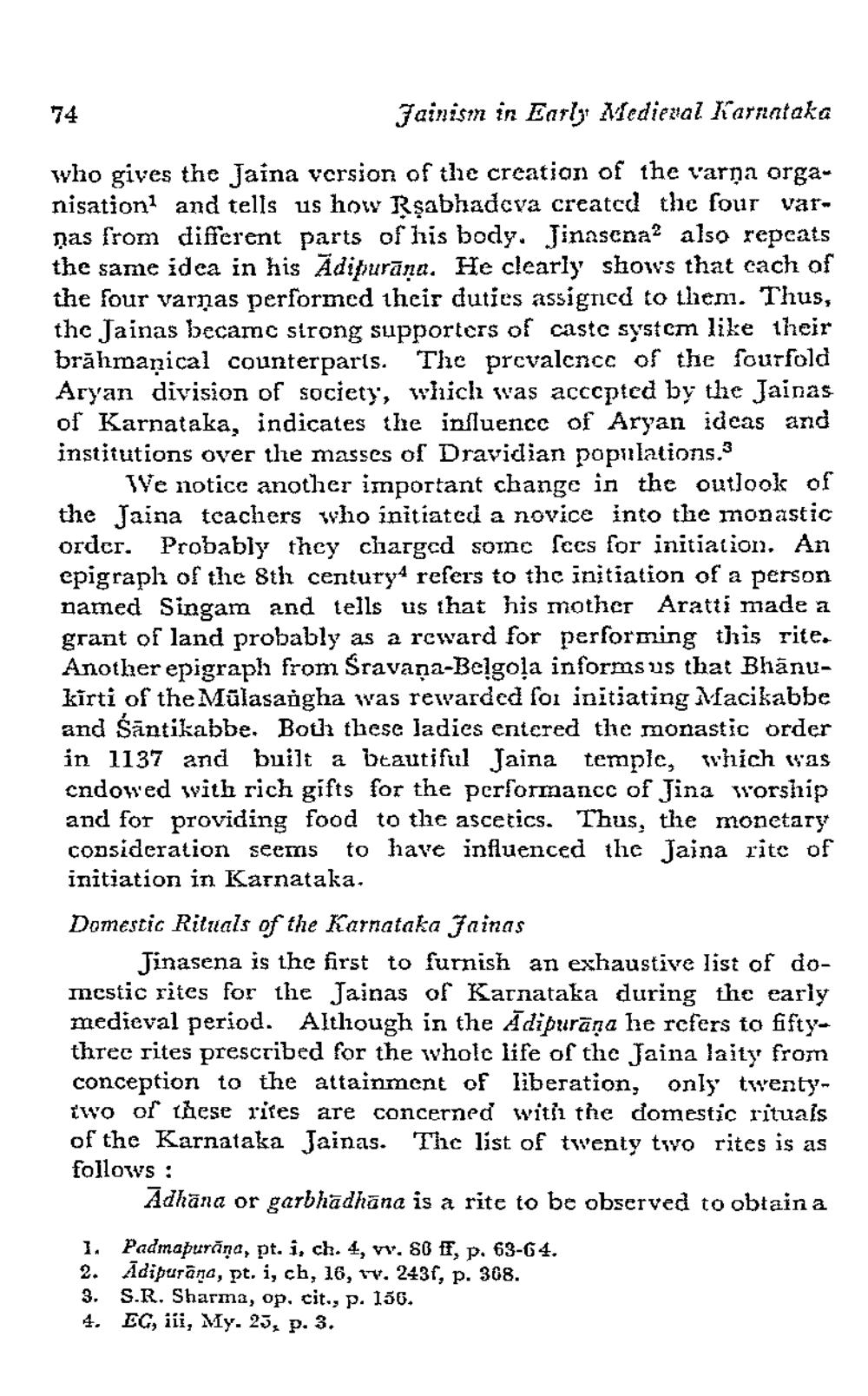________________
74
Jainism in Early: Medieval Karnataka
who gives the Jaina version of the creation of the varņa organisation' and tells us how Rşabhadeva created the four varņas from different parts of his body. Jinasena? also repcats the same idca in his Adipurāņa. He clearly shows that cach of the four varnas performed their duties assigned to them. Thus, the Jainas became strong supporters of castc system like their brāhmaṇical counterparts. The prevalence of the fourfold Aryan division of society, which was accepted by the Jainas of Karnataka, indicates the influence of Aryan ideas and institutions over the masses of Dravidian popnlations.3
We notice another important change in the outlook of the Jaina teachers who initiated a novice into the monastic order. Probably they charged soinc fccs for initiation. An epigraph of the 8th century4 refers to the initiation of a person named Singam and tells us that his mother Aratti made a grant of land probably as a rcward for performing this rite. Another epigraph from Sravana-Belgola informs us that Bhānukirti of the Mülasangha was rewarded for initiating Macikabbe and śāntikabbe. Both these ladies entered the monastic order in 1137 and built a beautiful Jaina temple, which was cndowed with rich gifts for the performance of Jina worship and for providing food to the ascetics. Thus, the monetary consideration seems to have influenced the Jaina ritc of initiation in Karnataka. Domestic Rituals of the Karnataka Jninas
Jinasena is the first to furnish an exhaustive list of domestic rites for the Jainas of Karnataka during the early medieval period. Although in the Ādipuräna he refers to fiftythrec rites prescribed for the whole life of the Jaina laity from conception to the attainment of liberation, only twentytwo of these rites are concerned with the domestic rituals of the Karnataka Jainas. The list of twenty two rites is as follows:
Adhāna or garbhādhana is a rite to be observed to obtain a
1. Padmapurana, pt. i, ch. 4, v. 86 f, p. 63-64. 2. Adipurang, pt. i, ch, 16, rv. 2437, p. 308. 3. S.R. Sharma, op. cit., p. 156. 4. EG, iii, My. 25, p. 3.




